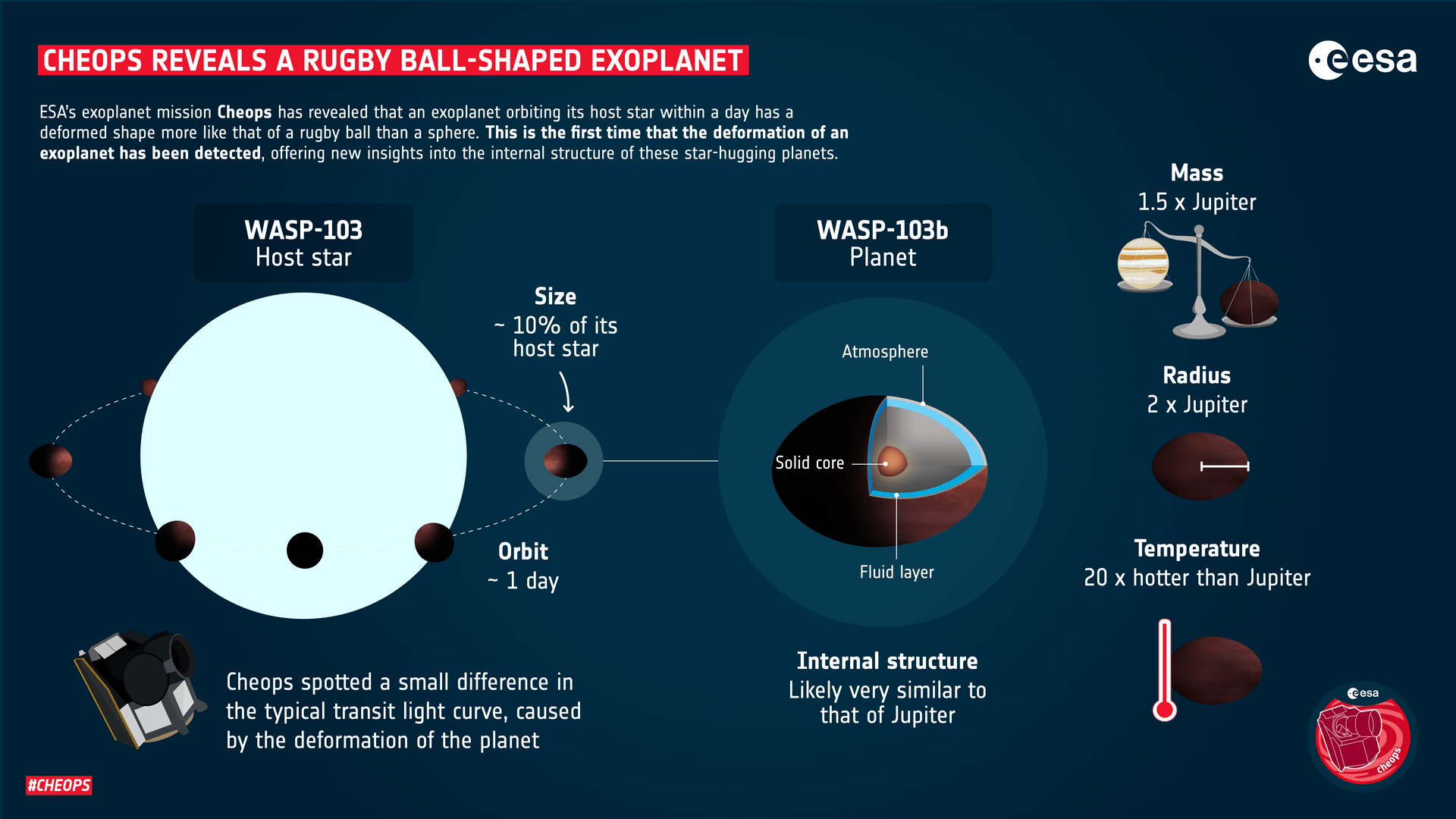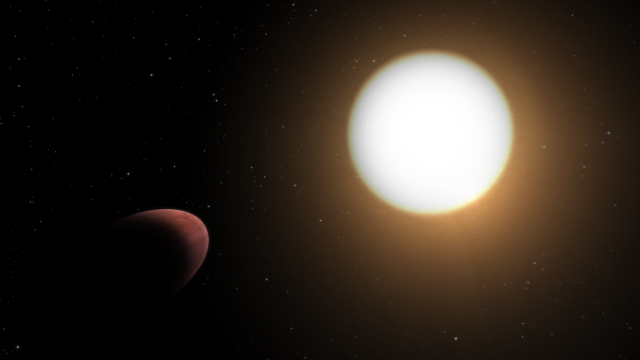A team of astronomers studying distant exoplanets found one that seems to be shaped like a football — or a rugby ball, depending on your frame of reference — rather than the usual sphere. The team suspects the planet’s shape is caused by the intense tidal forces of its host star.
The planet, discovered in 2014, is called WASP-103b and is about 1,530 light-years from Earth. It whips around its star in less than an Earth day and is a little more massive than Jupiter, as well as 20 times hotter. But unlike our local gas giant, this planet is oblong, as described in a paper recently published in Astronomy & Astrophysics.
“In principle we would expect a planet with 1.5 times the mass of Jupiter to be roughly the same size, so WASP-103b must be very inflated due to heating from its star and maybe other mechanisms,” said lead author Susana Barros, an astrophysicist at the Instituto de Astrofísica e Ciências do Espaço and the University of Porto in Portugal, in an ESA release.
WASP-103b is what’s called a hot Jupiter, which is a class of exoplanet characterised by similarities to our local gas giant. The recently analysed planet isn’t the first oddly shaped hot Jupiter: In 2019, a football-shaped world called WASP-121b was found to be leaking heavy metals.

But it was only recently that a team of astronomers scrutinised the exoplanet’s transit light curve, or the way that it blocks out some of the star’s light while passing in front of it from our perspective. The team studied WASP-103b’s transit light curves using the CHaracterising ExOplanet Satellite (CHEOPS), a space telescope designed to study the structure of exoplanets. Combining CHEOPS data with data from the Hubble Space Telescope and the Spitzer Space Telescope, the team learned more about the shape of the distant world.
“It’s incredible that Cheops was actually able to reveal this tiny deformation,” said study co-author Jacques Laskar, an astrophysicist at the Université Paris Sciences et Lettres, in the ESA release. “This is the first time such analysis has been made, and we can hope that observing over a longer time interval will strengthen this observation and lead to better knowledge of the planet’s internal structure.”
Based on WASP-103b’s transit light curve, the team determined how mass was distributed throughout the planet. They found the planet’s internal structure appeared similar to Jupiter’s, despite having twice the radius. They also determined that WASP-103b is close enough to its star that tidal forces deformed the would-be sphere into an ovoid shape.
The team noted that future observations of WASP-103b by the recently launched Webb Space Telescope could put better constraints on the radius of the planet. Webb is still on its way to its observation point in space, having successfully deployed its primary mirror this week.
